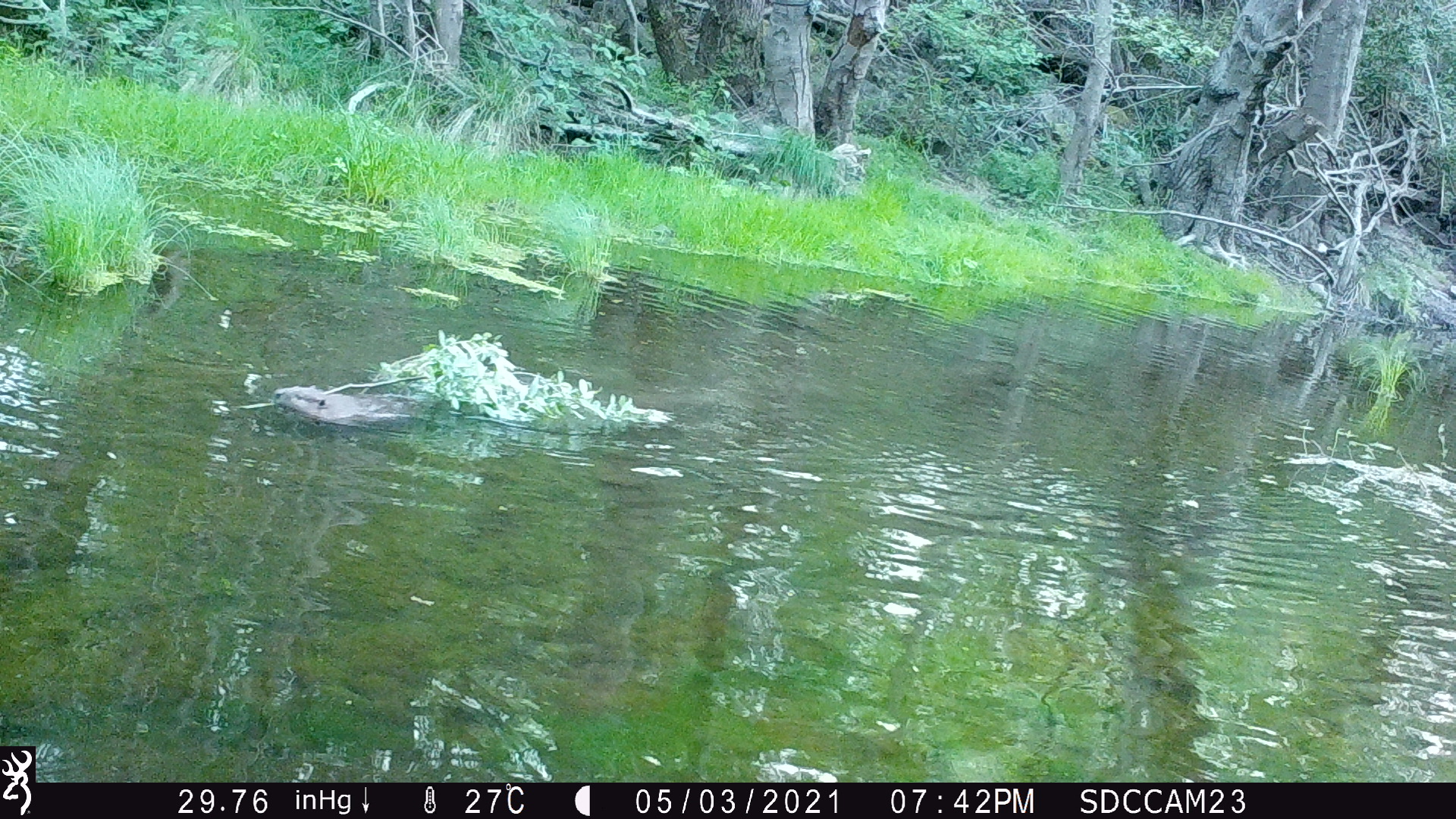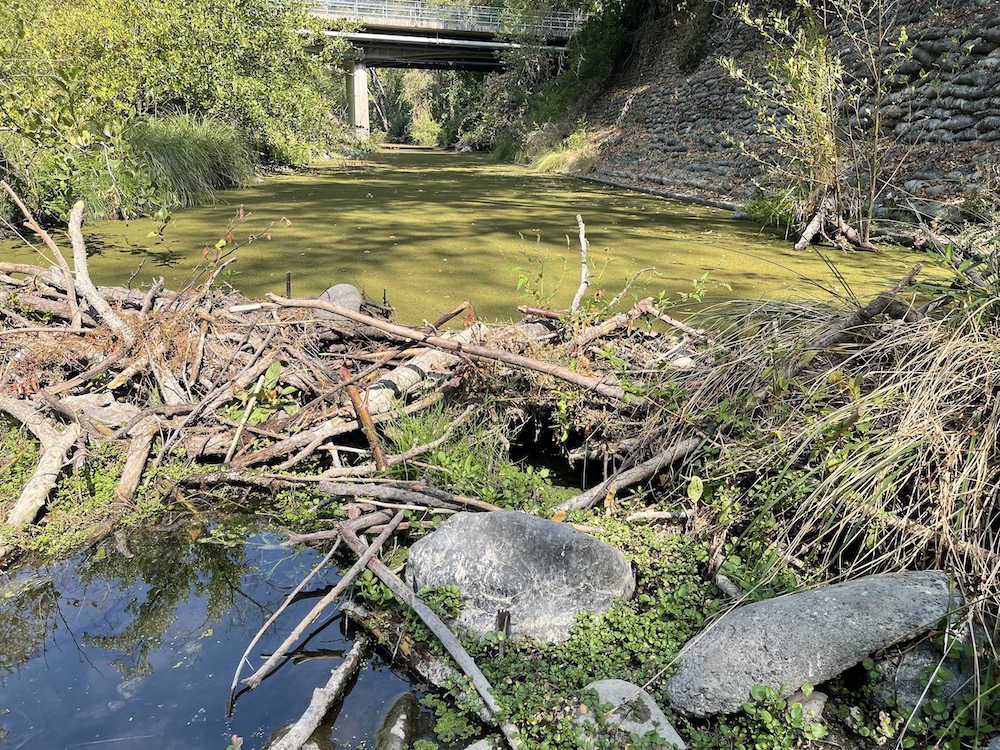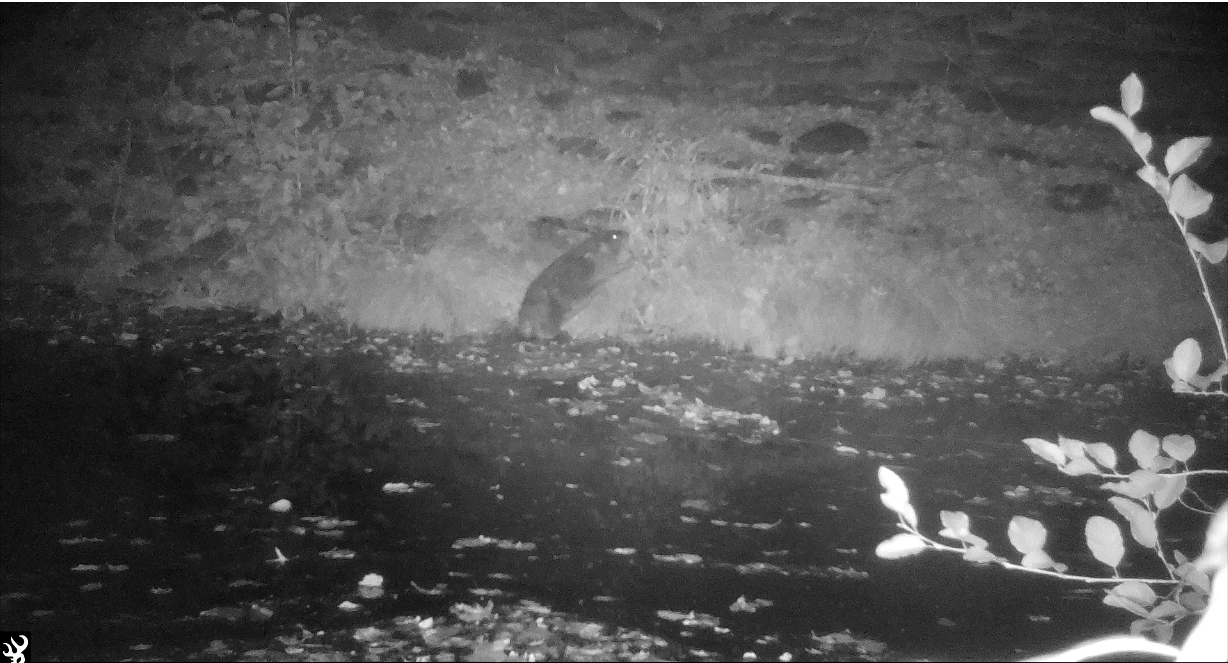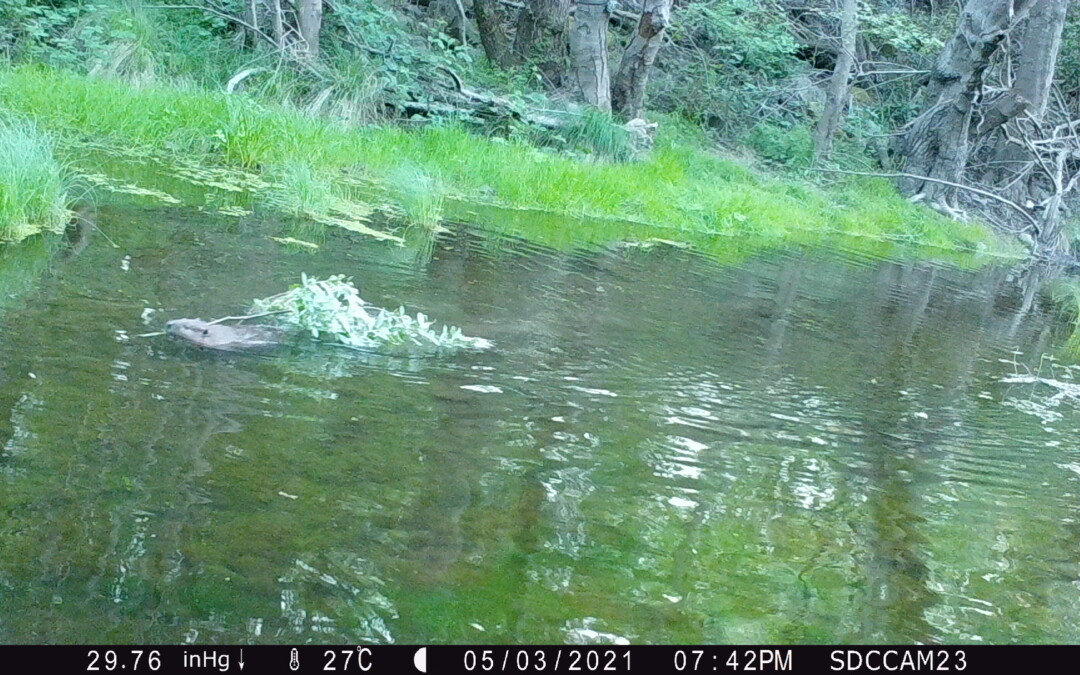It’s been a long summer of extreme drought conditions in Sonoma Valley. In what seems like a steady stream of dire news for our watershed one glimmer of good news stands out: beavers are moving back into Sonoma Creek.
The return of these charming dam builders isn’t quite breaking news – since 1993 beavers have slowly made a comeback in Sonoma Valley. But this year, in the middle of our peak dry season, their increasing presence is something for celebration. From the perspective of drought resiliency and water retention in our watershed we’re observing how beavers are a positive factor in keeping what water we do have flowing in our creek beds and reducing hydrological impacts of water rushing through the main stem of Sonoma Creek. Their natural impulse to build dams and create ponds is a major factor in retaining refuge habitat for species that rely on water to survive. Beavers provide refuge habitat for endangered salmonids, crawdads, California roach, Sacramento suckers, frogs and the endangered California freshwater shrimp which rely on deep pools and submerged, structural habitat like fine tree roots which are often present in the structure of a beaver dam. Any animal, insect, or crustacean that requires water to live in our creek is something that benefits from the damming that the beavers do.


Images of beavers hard at work in the main stem of Sonoma Creek. You can see the beavers gathering material to use to build their dams which help keep valuable water in our creek systems.
In the lower watershed of Sonoma Creek where sections are drying out we can observe the transformational effects that beaver dams have. Locations that would otherwise be completely dry have standing pools of water even now, prime examples of aquatic habitat retention by beaver activity. In the main stem of Sonoma Creek where we see the greatest impacts of the drought there are nothing but positives when it comes to beavers making their home in our creeks. They may even have something to teach us.
Ecologists have looked to beaver’s damming behavior as a possible management strategy for retaining water in our creek systems. Simulated beaver dams have the potential to slow down water and keep it in our local ecosystems for longer – benefitting the entire ecology of Sonoma Valley. There are great positive ecological health gains made by slowing water down. Though building simulated beaver dams is not a management technique that could be done in every circumstance. Their potential utilization could create solutions for water retention and support steelhead migration. It begs the question: What does the presence of beavers mean for water resources? Largely it seems it’s a benefit to all to have them here.


Evidence of the impact that beaver dams can have in retaining water in Sonoma Creek. In the image to the right you can see the presence of duckweed growing over the pool created by the beaver dam.
There are some issues of note that can arise with the presence of beaver ponds. One such issue being a proliferation of water fern or duckweed growing over standing pools. Excessive growth of these plant species can block out light to submerged aquatic plants and can prevent exchange of gases with the air making the water below uninhabitable to many aquatic animals. However, it’s better to have water in the creeks than none at all, and these refuges of cold pools allow many species that can handle the duckweed a little extra room to survive a dire drought year.

A beaver emerging out onto land during the night. The growing presence of beavers in our watershed has had increasing beneficial effects during this extreme drought season.
In town beavers can cause localized flooding and/or excessive soil wetness where development or agriculture have encroached upon low floodplains. In Sonoma Valley where the creek is mostly confined to a deep channel through the valley this is less of a concern. All in all it’s a net positive to have beavers back in our Valley and making their mark on our watershed. Keep your eyes peeled for their activity – if you’re lucky enough to spot one let us know!

